Artistic directors Rachel Healy and Neil Armfield have had to think well outside the square to pull together next year’s Adelaide Festival, which runs from February 26 to March 14 next year. There will be plenty of great shows on offer, and here’s six to whet your appetite.
FANGIRLS
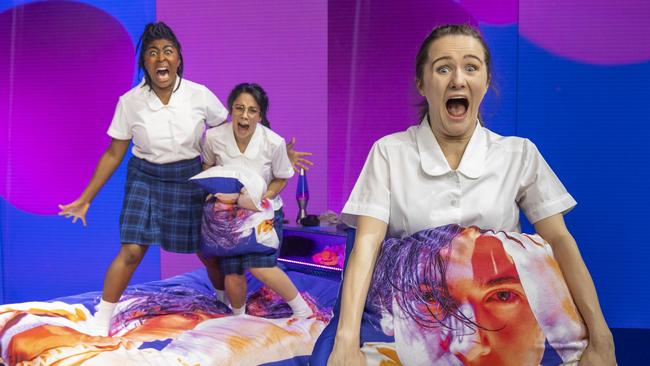
Fangirls, the homegrown musical which has taken Australia by storm and is set to do the same at next year’s Adelaide Festival, had its origin in an unlikely conversation between its creator, writer and composer Yve Blake, and a friend’s teenage cousin.
“In early 2015, I met a 13-year-old girl who told me she had met the man she was going to marry,” Blake says.
“When I asked what his name was, she confidently told me his name was Harry Styles (from UK boy band One Direction).
“So I laughed at her, because he was one of the biggest pop stars in the world. Then she looked at me, dead seriously, and said: ‘Don’t laugh at me. I love him so much, I would slit someone’s throat to be with him’.”
For Blake, the scene had just been scarily set for what was to become a career-launching hit.
“That got me pregnant with curiosity,” she declares. “I just wanted to learn everything there was to know about teenage fans, because I suspected there might be something to write about.
“But the moment that I really knew I had to write about fangirls was when Zane Malik, a member of One Direction, left the band.”
The story of Fangirls then became one not just of teen obsession, but how young women’s dreams and passions are often trivialised.
“I started to notice the subtle, gendered ways that even mainstream news outlets would cover the story of him leaving the band,” Blake explains.
“His fans have been described as ‘hysterical’ and ‘crazy’ and ‘hormonal’ and been likened to banshees.

“Why is it that image of young girls screaming their lungs out at a Justin Bieber concert, for example, might be described as crazy, scary, psycho, a bit much or pathetic – but the image of young boys screaming their lungs out at a football match might be described as passionate, loyal, or the love of the game?
“Ultimately, I realised that the way the world talks about fangirls is, I believe, a microcosm of so many ways that the world tries to minimise young women by undermining their intelligence.
“I wanted to write a show about all the lies that the world tried to tell young women – but I wanted it to be hilarious and shocking and uplifting and to feel as adrenal as a first crush.”
Ironically, Blake says her fascination stemmed from the fact that she was never part of a fandom as a teenager.
“I felt as outsiders did – say, like a 50-year-old dad watching his daughter scream and cry because Zane had left One Direction.
“What I did understand was what it’s like to be a teenage girl. When you care about things, the stakes can feel like life or death – I remember that.
“I wanted to create a show that immerses you in the feelings of this girl.”
Fangirls focuses on 14-year-old Edna, a diehard fan of the biggest boy band in the world, the thinly disguised True Connection, whose lead singer also just happens to be named Harry (to be played in Adelaide by The Voice finalist Aydan Calafiore).
Blake also happens to be a singer and composed the musical’s songs as well as writing its book.
“The inspiration for the score is like pop concert meets rave, meets church,” she says.
“It’s got these kind of girls’ choir elements. When you enter the show, it is like you are entering the Church of Harry.
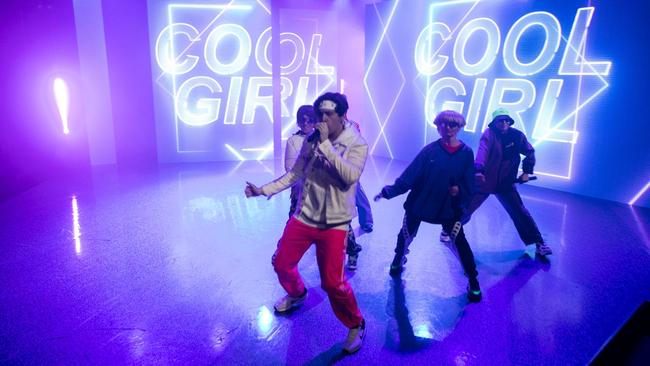
“It would have been too easy to make a show that was just asking the audience to laugh at fangirls. It’s more interesting to make a show that gets people to laugh at fangirls, only to then make them cry with them.
“I describe it as being like a Trojan Horse, because it appears to be this musical comedy, but in the end it smuggles these girls into your hearts and talks about some much bigger issues.”
One thing Blake discovered while researching the real One Direction was just how organised and determined their fans were at achieving their objectives.
“I went into researching fandom naively assuming that it would be super heterosexual and probably about young women competing with one another. But actually one of the first things found was this group of One Direction fans called Rainbow Direction. They are all about making sure that queer fans can feel safe and loved and supported in the fandom.”
At US concerts, Rainbow Direction members have co-ordinated for fans to hold up their phones showing different colours all around the venue, “effectively turning the whole stadium into a very neat rainbow flag”.
K-Pop fans have also co-ordinated Twitter campaigns to effectively defuse racist hashtags by posting them with “fancams” or fan-edited videos. Anyone clicking on the hashtags was then flooded with footage of Korean pop stars singing, dancing or giving funny looks, effectively making the racist tag useless within hours.
“The image that the world largely paints of teenage fans is that they are victims to their own emotions, that they are foolish and ultimately that they are not very intelligent – and I have found exactly the opposite to be true,” Blake says.
“It’s a super-gendered perspective that intelligence equals emotionlessness. Being able to really care about something without apology – I think it’s a superpower.
“This is a group of people who define themselves by what they love, and to me that is really powerful and positive.”
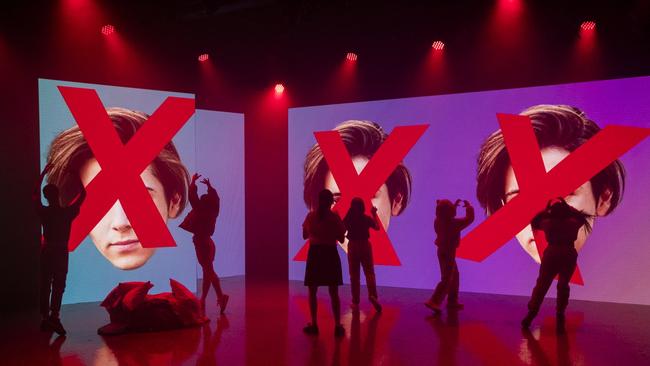
Fandom is also nothing new, although its teenage incarnation perhaps first became evident as a phenomenon in the 1950s and 60s with the advent of Elvis and the Beatles.
However, Blake says there are even stories of 19th century Hungarian composer Franz Liszt generating such a devoted female following that he had to “buy a dog because there were so many requests for locks of his hair”.
In a TED talk last year, Blake even explored the origins of the word hysterical.
“Hysteria used to be considered this malady that was suffered by women if there was a dysfunction of their uterus,” she says.
“It’s interesting that even the word ‘hormonal’ that we used nowadays is so gendered – it’s so rare to describe a teenage boy as being hormonal. Usually that word is used to describe a girl being overly emotional … the subtext is ‘inappropriately emotional’.
“As a teenage girl, you can’t win. So I wanted to make a show where, at the end of the day, teenage girls do get to win.”
From the outset of her career, Sydney born and raise Blake, now 27, has been a combination of actor, musician, composer, playwright and stand-up comedian.
“I became obsessed with theatre as a teenager … but I often noticed I was the youngest person in the room. A lot of theatre would be made to cater to the tastes of older, kind of wealthy, mostly white people,” she says.
“For me, that was a little heartbreaking because theatre should be like an empathy gym … where you get to see a perspective other than your own.
“I was always asking myself, what can I put in a theatre that is truly for all generations and is an experience that unites people from many different walks of life?
“My dream was to make a show that 14-year-old me would not have been bored by, which is a tall order. At the same time, I wanted to make a show that my 70-something dad could watch and feel included in.”
Blake describes herself as “very precocious”. She started writing as a teen, “entering playwriting competitions and lying about my age”. She developed Fangirls in part with the $10,000 Rebel Wilson Theatremaker Scholarship from the Australian Theatre for Young People.

She doesn’t play any instruments, but is a self-taught composer who writes music on her computer keyboard. She also spent three years in London, where she turned interviews with people into songs, using their real experiences and the metre of their speech in the lyrics.
In a strange turn of events, Blake had also started wiring a musical about a pandemic with friends in 2017-18, well before COVID-19. In this case, it was about a drug-resistant form of tuberculosis which forced everyone to go into lockdown, but the project was shelved. The songs are still sitting on her computer.
“It’s been a surreal element of my 2020,” she says, but adds there are no immediate plans to resurrect the pandemic musical. “Who wants to see a show about lockdown? We’ve just lived through it,” she laughs.
Blake is now busy working on an “eclectic buffet of yummy projects” that include a musical TV series, a family movie musical and a podcast musical, as well as a feature film about rock eisteddfods in the 1990s.
Those projects will prevent her from performing in the show at the Adelaide Festival, but actor Karis Oka who will take over the role of Edna has her own fan in Blake.
“I’m unspeakably excited for audiences to see the thunderbolt of talent that she is. I cannot wait to sit in that theatre and watch her soar,” Blake says.
The theme of teenage girls with boundless enthusiasm who refuse to be restricted by other people’s rules and set out to achieve their dreams could well be the blueprint for Blake’s own career.
She has not allowed herself been reined in by convention, or feel that she must “pay her dues” before setting out to create fresh, inventive work.
“There can be so many barriers. I’ve worked a lot of hospitality jobs in my life – this has not been an overnight success story. I’ve grafted really, really hard to make this happen,” she says.
“The through line of my career has been that I’m trying to make something I haven’t seen yet. For that reason, I’m not too concerned about the rules of how to do things. I care really passionately about telling a story I haven’t heard yet.”
Fangirls is at the Ridley Centre, Adelaide Showground, from February 27 to March 14.
A GERMAN LIFE
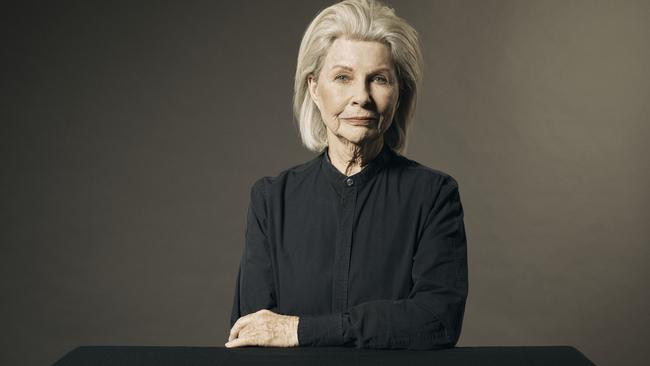
After six decades of work for which she was often hailed as the First Lady of Australian theatre, Robyn Nevin had vowed to take an extended break from the stage and, at age 78, was revitalised by her fresh focus on TV and film.
It would take an extraordinary play for Nevin to break that 2017 vow – and that play is A German Life, the theatrical cornerstone of next year’s Adelaide Festival program. It is the first-hand account of Brunhilde Pomsel, who was a personal secretary to Joseph Goebbels, the Reich Minister of Propaganda for Nazi Germany, during World War II.
Pomsel’s story was virtually unknown until 2016 when, at the age of 105, the first extensive interview she had given was released in an Austrian documentary, also titled A German Life. A year later, Pomsel died at her home in Munich.
“The opportunity to do the play was one that kind of came as a bit of a surprise, because I had made a pledge that I would leave the theatre alone for a while – a goodly while,” Nevin says.
“I chose just to do screen work, which was a very positive decision for me, and I was very happy with it, and I was loving the projects I was doing.
“But this one … there was something very compelling about the piece, partly because it was a one-woman show. I’d had a very good experience with a Joan Didion piece called The Year of Magical Thinking, which was a one-woman piece that I toured quite widely in 2008.”
Like most people, Nevin had not heard of Pomsel before the documentary was released. However, what attracted her to the role was “more to do with the context in which we are living”.
“It was the parallels of this time with that time that drew me in,” she says.
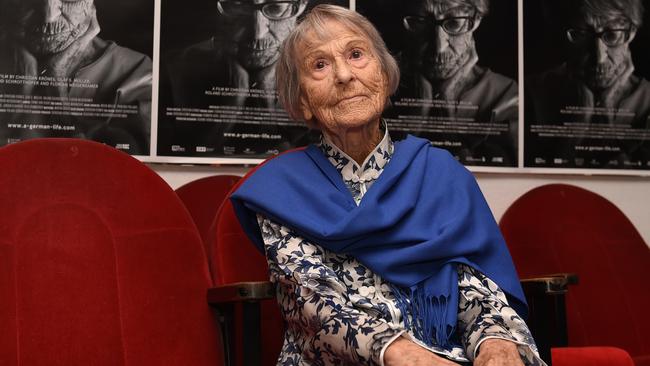
“We are just going through the American election and it’s a very tense moment – we seem to be on the edge of something enormous.
“The parallels include the various ways in which the Nazis controlled information throughout Germany via newspapers, radio and film. Trump and his surrogates have been effective in persuading his base to believe whatever he says, about anything and everything, including a raging – actual – pandemic.
“His propaganda is as frighteningly effective as was the Nazis’.”
Eager to improve her lot in life, in 1933 Pomsel joined the Nazi Party and got a job in the news department of the government radio station. On recommendation, she was transferred to the Reich Ministry of Public Enlightenment and Propaganda in 1942, where she worked under Goebbels as a stenographer until the end of the war.
“She joined the Nazi Party in order to be employed,” Nevin says. “She joined up – without thinking what that meant. That’s the sin.”
However, other sources suggest Pomsel was more than just a secretary, and that her tasks included “massaging downwards statistics about fallen soldiers, as well as exaggerating the number of rapes of German women by the Red Army”.
After the war, Pomsel was imprisoned by the Soviets for five years in three different concentration camps.
UK playwright Christopher Hampton is well known for his adaptations, in particular Les Liaisons Dangereuses (Dangerous Liaisons), but A German Life is unusual insomuch as it was adapted from a documentary film, quoting almost verbatim from its subject. “It’s coming out of the mouth of a woman who actually lived, it’s not fictional,” Nevin says.
“I don’t even think of Christopher Hampton, really, I think of her. It’s her voice … that gives it a veracity, whether she was telling the truth or not.

“She seemed such a wonderfully ordinary kind of woman. She was ambitious in a narrow kind of way – she wanted to live well and earn a living – but her early life was modest and simple and ordinary. I think at one stage she said she just really wanted to be a hairdresser.
“Then she said: ‘I’d always wanted to work in an office – it was bliss’. They are not dreamy ambitions, they are not large ambitions – they are very localised and small.
“You are aware of the extent to which she doesn’t tell the full story. I think the most worrying aspect of her telling of the story is the degree to which she claims she had no interest in politics. I don’t know how truthful that is, but I like the ambiguity.
“We can’t know everything about her – she tells what she wants to tell, she tells what she remembers. Who knows what she is leaving out, whether it’s deliberate or whether it’s an issue of a fading memory or it’s an issue of denial?”
Nevin’s own history with the Adelaide Festival stretches right back to its second event in 1962, when she appeared with Zoe Caldwell in Saint Joan.
She returned in 1980 alongside Robyn Archer in Songs from Sideshow Alley.
In 1959, at the age of just 16, Nevin had been part of the first intake at NIDA, the National Institute of Dramatic Art – even though there was no theatrical background in her family.
“I was completely driven by the need to do that particular course, to be an actress,” she says. “I’d been encouraged by my headmistress, who was a marvellous woman, Audrey Morphett, who founded the Fahan School that I went to in Hobart.
“She had a love for the arts, and for theatre in particular, and she used to direct a school play each year. She selected me, I think initially, because I looked right for the role of Snow White.” Nevin continued to land lead roles in successive school plays.
“It became really the focus of my year. It would take me months to rehearse it and got me out of otherwise compulsory sporting activities, in which I had no interest.”
Those annual school plays were presented at the Theatre Royal in Hobart, the oldest continually operating theatre in Australia.
“It had a remarkable atmosphere and I was quite affected by that … it was filled with some kind of magic that I felt was quite important,” Nevin recalls.
“I can remember as a child looking up into the area above the stage where all the pieces of scenery were hanging, and having some sort of mystical experience,” she says with a chuckle.
“It was quite extraordinary.”
A German Life, Dunstan Playhouse, February 19 to March 14.
PLASTIC BAG STORE
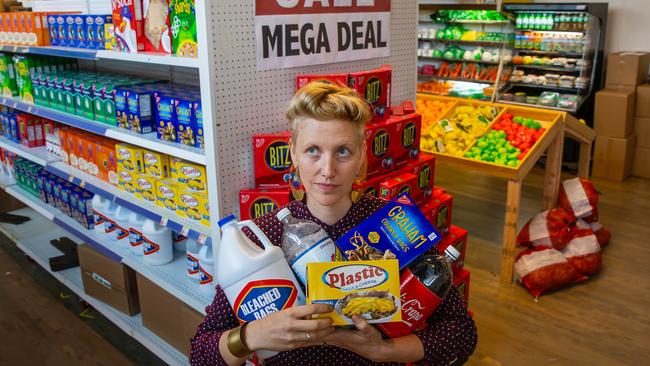
It seems entirely appropriate that both the Andy Warhol Foundation and the Jim Henson Foundation helped bring Robin Frohardt’s quirky pop art meets puppetry installation the Plastic Bag Store to life in New York’s Times Square.
“It’s the perfect combination – it is sort of Andy Warhol meets Jim Henson,” Brooklyn-based multidisciplinary artist Frohardt laughs.
That symmetry will take on another dimension when the Plastic Bag Store takes over an iconic retail space at the former Harris Scarfe store in Rundle Mall as part of next year’s Adelaide Festival. Inside the store, visitors will find a supermarket with shelves stocked with everything from fresh fruit and vegetables to gaudily packaged cereals – all made from plastic bags and other single-use “disposable” plastic items.
Frohardt will come to Adelaide for the installation, which incorporates elements of film and puppetry, and stay for the duration of the Festival. Plastic Bag Store only reopened in New York last month, after having to close its doors in March due to the COVID-19 pandemic.
South Australia was the first state to ban single-use plastic bags back in 2009, and recently passed legislation to prohibit other single-use plastic items such as cutlery, straws and coffee stirrers from next year.
It was also the first state to introduce refundable deposits on plastic bottles to encourage recycling.
“I wasn’t aware that they were the first – I knew that Australia has much more progressive policies around plastic,” Frohardt says. “I do think it will help people who already have an understanding of some of the issues surrounding single-use plastic … it will allow them to go deeper into the story that we tell in our performance.
“We feel so far behind here (in the US) – I think that legislation is wonderful. This stuff, it’s so ubiquitous and sometimes we can’t imagine how we would live without it. But, in the future, once more and more countries jump on this bandwagon of legislation that bans single use, it will feel normal again.

“We didn’t have all this stuff a few decades ago … so it’s a psychological hurdle we need to get over. When they banned smoking inside in New York around 2000, people just couldn’t believe it … that just seemed insane. Now it seems insane if you were to light a cigarette inside – people would look at you like you were out of your mind.
“That sort of mental transition will hopefully happen with plastics.”
Many people are only just becoming aware of what happens when plastics find their way into the environment, particularly rivers and oceans, Frohardt says.
“They are designed to disappear from our psyche, from our vision. They are designed to just enter our lives for only a second – you use a little stirrer and then you throw it away. It’s out of your sight, out of your mind. It’s kind of invisible, in plain sight. If it all keeps going away – wherever that is – people don’t notice, it becomes very easy to ignore the problem.”
However, Frohardt says the Plastic Bag Store is intended to be fun and humorous, not about browbeating.
“As an artist, I don’t have the answers – I just try to come up with entertaining questions,” she laughs. “Things will not change until there is a public understanding or a public outrage. Anything I can do to just fuel the understanding will help move things along. I’m not a policy writer, I’m not an environmental scientist, but I try to tell an interesting story that gives people an opportunity to reflect on a deeper level.
“Humour has always been important in my work, in particular with subjects that are difficult to confront directly. It can be a little bit of a release valve.
“I want to swipe past pictures of sea turtles caught in plastic nets … but if there is something that’s engaging and humorous and colourful, you might engage with it longer and thing about it deeper.”
“Shoppers” can expect to find products with names such as Caps N’ Such cereal or Plastic Bags & Cheese.
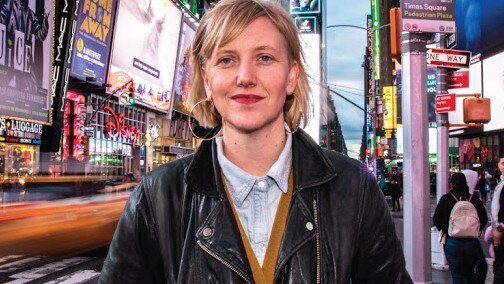
“It’s pretty dark but there’s definitely a lot of puns. There’s so much material in a grocery store – it was really fun to come up with all the packaging.”
It was the over-packaging of everyday items at a supermarket which inspired Frohardt in the first place. “The original idea came from watching someone bag and double-bag all my groceries that were already bagged inside of bags … it was like absurd,” she says. “What if I made a grocery store that just sold packaging? It would highlight the absurdity of it all.”
Frohardt had previously – and continues to – make installations and short films using only cardboard. “I really, really enjoyed the limitations of just one material. So it was a very fun challenge to take plastic bags and plastic trash and see how many things I can make out of this one material.”
Most of the Plastic Bag Store will be shipped in from the US, “because it took years to create”. “But I think we’re going to try to create some specific products that reference Australian brands as well.”
Puppet design and playwriting are also part of Frohardt’s repertoire and of the Plastic Bag Store.
“It transforms into a theatrical experience. There was a live puppet play that went along inside – all the shelves transform into something else and there are hidden rooms,” she says.
“We were unable to open with the live element due to the pandemic, but we’ve reimagined it. We ended up filming some of the live puppetry but we still present it in the store and there are still some surprise, hidden areas the audience gets to explore.”
Frohardt studied painting in college but also had done theatre in high school. She grew up in Colorado and was an exchange student in Melbourne in 1998, but this will be her first trip back to Australia as an adult.
“I find that puppetry is a combination of all of the art forms together – it’s painting and sculpting, and storytelling and performance. It allows me to not have to choose … I can do them all.
“I definitely loved The Muppets as a child. Then I realised that adults connect with it the same way kids do – it kind of activates your ‘child brain’. It opened up a realm of possibilities where we could tell complex stories for grown-ups this way.”
The puppetry film component of Plastic Bag Store looks at the idea that our plastic detritus will become archaeological remains for the future, by which our culture will be judged.
“It spans the ancient past and the present day and the far-off future. It tracks a certain bag of plastic trash – in the future someone discovers it and misinterprets its significance in our lives.
“Why else would we make so much of it and make it so durable if it didn’t mean something?”
Plastic Bag Store, Rundle Mall, February 23 to March 14.
IMPERMANENCE
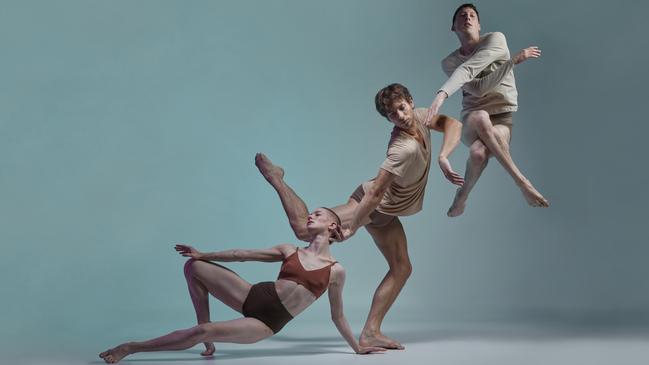
Fire, both abroad and in Australia, both structural and environmental, played a huge part in the inspiration for Impermanence, the new work from Sydney Dance Company artistic director Rafael Bonachela, American composer Bryce Dessner and Adelaide’s own Australian String Quartet.
“I was in Paris … and Bryce lives in Paris,” Barcelona-born Bonachela recalls of the development process last year. “We met for coffee and I went to his studio. It was literally months after Notre Dame cathedral had burnt down. He had been thinking a lot about impermanence, and how things fall apart even when you think they are going to be there forever – like Notre Dame, which had been there for hundreds of years.
“That took us into the impermanence of human life, and everything that’s going wrong with the planet, and human relationships, and so on.
“I was like … let’s go for this idea of the ephemeral nature of everything. There’s something about the absolute devastation of that, but also beauty – that juxtaposition was something we wanted to explore.”
Dessner, best known as guitarist and songwriter for US band The National, is also acclaimed for his orchestral, chamber and vocal compositions, which have been commissioned by companies including the Los Angeles Philharmonic, Metropolitan Museum of Art for the New York Philharmonic, and Ensemble InterContemporain in Paris.
“A year ago, he was deep into writing the music. Suddenly, the fires started in Australia and the whole world was seeing it live,” Bonachela says. “Bryce was devastated, he was really affected by it … because he has come here many times. He has friends that had been evacuated.
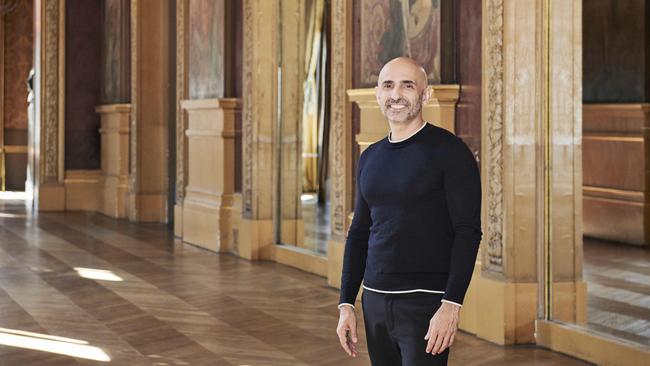
“These images of the Australian bush on fire really entered his thinking, and they really entered the work. It’s amazing – for someone who lives so far away, it was something that was really real for him.”
In Impermanence, Dessner’s score – and Bonachela’s choreography – embody that sense of urgency and threat.
“Your heart starts racing. This composition has a pulsing that is constant in it, from beginning to end almost … there is a real intensity and a physicality in the layers of this score,” Bonachela says. “At times, it is epic, like a fire can be or Notre Dame can be … cathedral like. At times it is also quiet, but always driven and very raw. There are moments of beauty too, because there is hope – but there is also something mournful and, eventually, radiant.”
As if to echo its ephemeral inspirations, it will be a different Impermanence at next year’s Adelaide Festival than the one which was intended to make its debut as part of a triple-bill in Sydney earlier this year.
“We were three days from opening night, and the world as we all know it changed,” Bonachela says. Dessner was meant to be on tour here with The National, and the band was set to attend the opening night of the dance triple-bill. Neither happened.
Bonachela’s interest in Dessner’s music stems back to his love of the US ensemble Kronos Quartet. “I have always loved and really connected with the sound of strings – from the very beginning of being a dancer or even a choreographer,” he says.
“With the Kronos Quartet, I always found that they did really interesting commissioning and collaborations, so I always bought their CDs … there was always a journey of discovery and there was a contemporary feeling about it that I really liked.”
In 2015 he was listening to Spotify and heard a piece of music by Kronos Quartet called Aheym, composed by Dessner.
“I was like, ‘Oh my god, this is amazing’. I was just walking around, lost in time … I took this incredible emotional journey.”

Bonachela adapted three of Kronos’s recordings of Dessner works as the score for his 2015 work Frame of Mind.
“At that time, there was a lot going on in my life that had happened suddenly. My mum had fallen and was in hospital, in intensive care … so I was super stressed out. My partner had moved to New York for a year to work … with this music there was something that really connected with my mood. There was this idea of fear and separation and longing and loss, and feeling alone despite being surrounded by people.”
When Frame Of Mind went back into rehearsal for a one-off performance in 2018, Dessner finally had a chance to see it.
“He absolutely lost it … he said he had never seen a choreographer who really matched the intricacy but also the emotional content of his work,” Bonachela says.
“Then, as I was walking him out of the studio, he said: ‘When are we working together?’ I just quickly said ‘April 2020’ like that.”
Dessner also asked why Frame of Mind hadn’t been performed with a live quartet. The reason had been budgetary but, encouraged by Dessner, when Bonachela remounted Frame of Mind for a full season later in 2018, he was able to secure funds for a live quartet to accompany the dance.
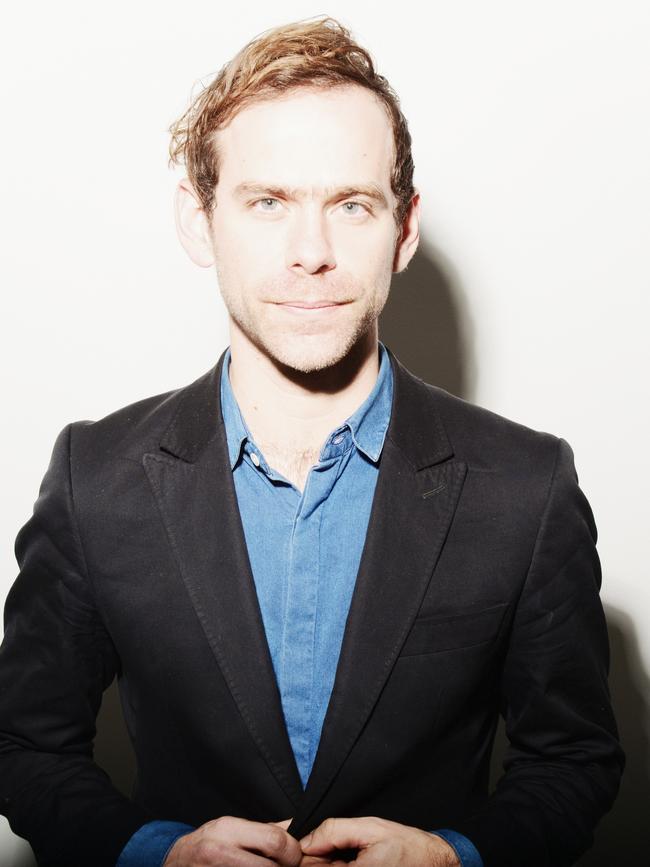
“I said, ‘Look, I know the perfect quartet – the Australian String Quartet. They are amazing.’ That, in a way, was the beginning of what was to come. They also loved Bryce’s music, they love to commission music, Dale (Barltrop, violinist) loved The National – there were so many things that came together. I wanted this energy and expression that they have, that really is incredible.”
Impermanence was conceived as a 40-minute piece, to fit in the triple-bill. However, as all of Sydney Dance Company’s and The National’s tours for this year were cancelled, a rare opportunity presented itself to extend the work into a full-length piece.
“When the Adelaide Festival, being such an iconic festival, approached us, we decided that we needed to find something positive in this moment in time and something to focus on,” Bonachela says.
The original score, which also features electronic effects, was in eight movements with titles like Alarms, Disintegration, Embers, Emergency and Raking.
“For us, it was this idea of panic, crisis, anxiousness. We played a lot, creatively, with the idea of ‘fight or flight’ and that adrenaline that rushes through you, the sense of urgency … also fearlessness and this heightened sense of awareness.”
The expanded score also incorporates UK singer Anohni’s vocals from the song Another World, by Antony and the Johnsons.
“Bryce said to me, ‘I found the perfect song to go with our work’,” Bonachela says. “It is very connected to the idea of how we are treating this world, in many ways.”
Impermanence, Festival Theatre, March 10-11.
SMALL METAL OBJECTS
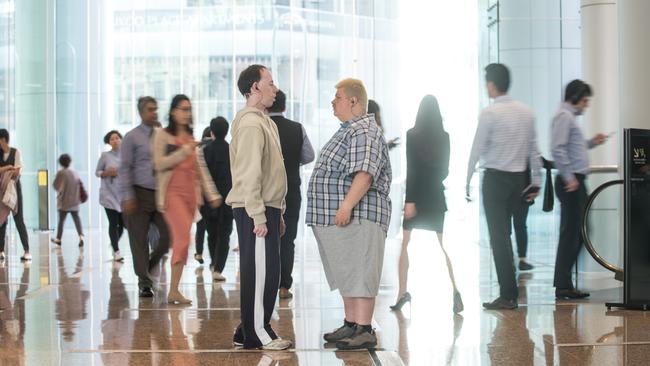
When Small Metal Objects was first performed in Adelaide in 2006, the only members of the public who got to see it were unwitting commuters in the Railway Station concourse who became part of the passing show. Since then, the show has become the backbone of Victorian company Back to Back Theatre, in demand at festivals around the world and locations from New York’s Staten Island ferry terminal to European piazzas and parks.
“The show is designed for being presented in a public space with, preferably, a large pedestrian flow,” says Back to Back artistic director Bruce Gladwin.
“We performed two shows of it for the Australian Performing Arts Market (which showcased works for international presenters in conjunction with the Adelaide Festival) not long after we first premiered the work in Melbourne.
“We performed it at the train station, in that causeway or walkway, which is one of the most memorable locations where we’ve done the show.
“There was this overwhelming response from international festivals and presenters, and then the show just went on this huge journey for years and years of touring throughout Europe and America, and then Asia.”
The railway concourse is not available this year, but Small Metal Objects has found a new home in Moseley Square at Glenelg.
“It’s quite a robust show and it’s been done in many different environments but where its magic really happens is when you locate it in a place where it’s very busy,” says Gladwin.
The reaction and possible interaction of pedestrians adds to its character.
“In a way, it’s like watching a theatre show with maybe 2000 extras. There’s permission to be a voyeur for a moment.
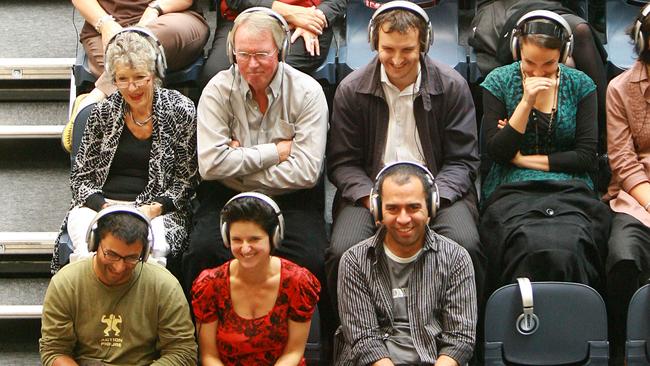
“There are actually two narratives in the show. One is this story that exists in the script, which is about a drug deal that goes wrong in a public space. The second narrative is the power dynamic between the seated audience – who are sitting there with headphones, all looking in one direction – and the commuting or passing public.”
That dynamic can shift from when the audience all looks and sometimes laughs at a passing member of the public, to when those people either stare back at or confront the audience.
“The audience is both the spectator and the spectacle. The actors are pretty much invisible to the general public in the area – there is nothing outlandish about their costumes or their action. The commuters are essentially looking at 150 to 200 people with headphones … trying to work out what is going on.”
As well as transmitting the actors' dialogue to the audience, the headphones carry accompanying soundtrack music by Adelaide composer Hugh Covill.
Geelong-based Back to Back Theatre – which also presented its work Food Court at the 2010 Adelaide Festival – has a core creative team which includes actors with intellectual disabilities.
“The work is co-authored between the actors and myself, and sometimes collaborating artists,” Gladwin says.
Small Metal Objects also aims to open audience’s minds about aspects of identity and desire, particularly how that relates to people with a disability’s need to be seen and heard.

“With this work we wanted to make something that explored the relationship between economics and human value – specifically around how an individual’s capacity to earn an income or accumulate capital really equates to how they are valued by society.
“This is incredibly pertinent for a lot of our actors, some of whom have a history of being supported through welfare, disability pension, et cetera. But while they are working with us, those actors are professional and they are earning an income.”
Actors Simon Laherty and Sonia Teuben, who play the main street dealer characters Steve and Gary, co-devised and have performed Small Metal Objects since its inception in 2005.
“Sonia had an objective of wanting to create a character who was a business person, based on a drug dealer she knew – so it’s drawn from personal experience. But the character of Gary is very ethically and morally sound – which sounds like a complete contradiction to people’s perception of what a drug dealer is. But, in the end, that character has to choose between making a profit or helping their friend Steve, who is having an emotional crisis.”
Gladwin says the work is a transformative and often funny piece, that happens to have disability advocacy embedded within it. “This show places our actors at the centre of major international festivals, often in the epicentre of those cities, and it supports them to be professional artists. ”
Small Metal Objects, Moseley Square, Glenelg, March 2-8.
A CHILD OF OUR TIME
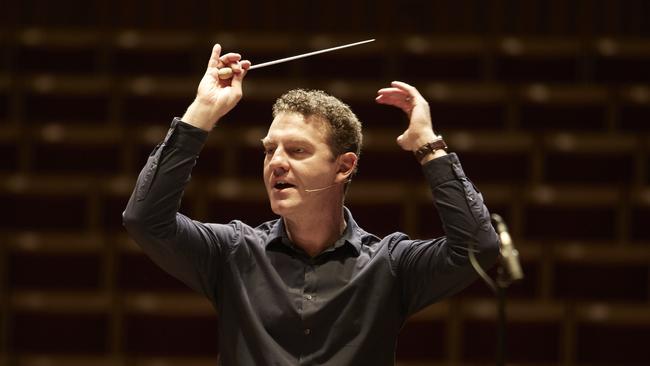
When English composer Michael Tippett started to write his oratorio A Child of Our Time on September 3, 1939 – the day that Britain entered World War II – he could not have imagined how relevant its themes would remain more than 80 years later.
“When I wrote the work, I was so engulfed in the actions of the period, I never considered its prophetic quality,” Tippett said in 1980. “But it seems that the growing violence springing out of divisions of nation, race, religion, status, colour or even just rich and poor is possibly the deepest present threat to the social fabric of all human society.”
Tippett died in 1998 but Australia’s foremost choral conductor, Brett Weymark, who will lead the work for next year’s Adelaide Festival, says performing the oratorio at this time in our history is particularly significant.
“This piece is about minorities and diversity, and standing up for decency and what is right at the end of the day,” Weymark says. “Everything from Brexit to Black Lives Matter, to how we are dealing with the coronavirus worldwide … maybe we are not on the brink of war, but we are seeing acts of violence like the ones that inspired Tippett to write this piece, more or less on a daily basis.
“The wonderful thing about a work like this is it actually allows us to pause, reflect and realise we do need to have a reaction to this. We can’t just turn the channel, we can’t just scroll down to the next news item … we actually do need to talk about this.”
Weymark can’t understand why A Child of Our Time is so rarely performed, especially with Tippett being a contemporary of and often compared with fellow composer Benjamin Britten.
“It’s an incredible piece that I think is classic Tippett, in the sense that he wears his heart on his sleeve a lot,” he says. “He was a pacifist, he was appalled by the events of 1938 that led to the Kristallnacht, which is the event which the piece specifically explores.”
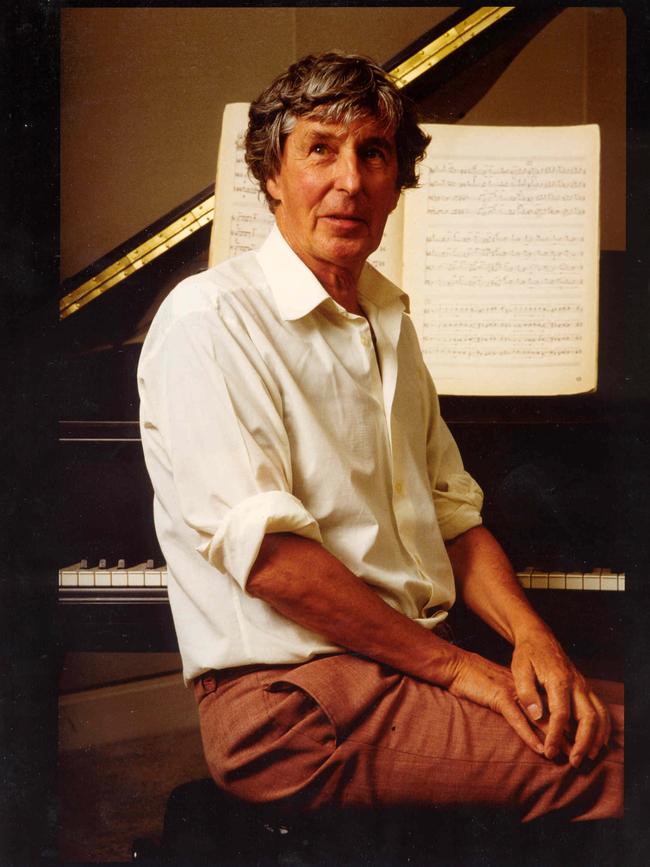
The November 1938 assassination in Paris of a German diplomat by 17-year-old Jewish refugee Herschel Grynszpan precipitated the Kristallnacht, or Night of Broken Glass, pogrom across Germany. Synagogues were burned, Jewish homes and businesses destroyed and thousands of Jews were arrested, stoned or beaten to death.
Weymark previously conducted the oratorio with the Sydney Philharmonia Choirs, of which he is artistic director, in 2005, to mark Tippett’s centenary.
At the Festival, the work will be performed with massed choir, four soloists and the Adelaide Symphony Orchestra.
“This is why the oratorio form, where you combine a choir with soloists, with an orchestra, is so potent,” Weymark says. “You get the intellectual argument of the words, backed up by the emotional content of the music, so it is a double whammy.”
Tippet had also re-educated himself in music before writing the oratorio.
“He always felt that he was a bit underprepared as a composer,” Weymark says. “So I think it was around the age of 27 or so, he decided to go back and restudy. Even to the end of his days, he was always worried about the actual technical side of his work.
“This inclusion of the spiritual, this American music which is associated with slavery and oppression, was something that nobody else had done in the 20th century. He was making a comparison with Bach’s Passions (which quoted Lutheran hymns) but at the same time trying to make the piece have a universal quality.
“This piece is unlike anything that he’d written up to that point. He was heavily influenced by the film music that he was writing … actually, a lot of composers during the 1930s and early part of the 1940s were writing film music to accompany both propaganda and anti-propaganda films in the UK.
“When I sit back and listen to the piece, I hear a lot of visual language – it has an expansive, film-like quality.”
Weymark says Tippett had studied in Germany, knew that country well and was fond of German culture. “Every musician worships at the feet of Mozart and Beethoven and Bach.
“For him, the personal thing was: How can this country that has produced so much great art, turn so evil? The first line of the piece says ‘The world turned on its dark side’.
“What Tippett is saying at the end of the piece is that we are all capable of this. If we are pushed far enough, we are capable of doing horrendous things to our fellow human beings.
“This is a warning.”
A Child of Our Time, Festival Theatre, March 14.

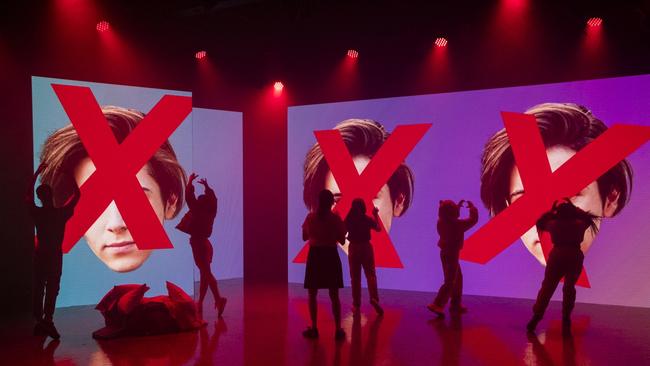
Add your comment to this story
To join the conversation, please log in. Don't have an account? Register
Join the conversation, you are commenting as Logout
Bars, stars and festival guitars
Wanderers frontman Dusty Lee Stephensen will premiere his upcoming solo material as part of Adelaide Guitar Festival.
Festivals in the firing line amid looming city rate rise
A raft of much-loved city festivals, activations and business programs may face devastating or program-ending funding cuts as Adelaide City Council looks to lower its rates.